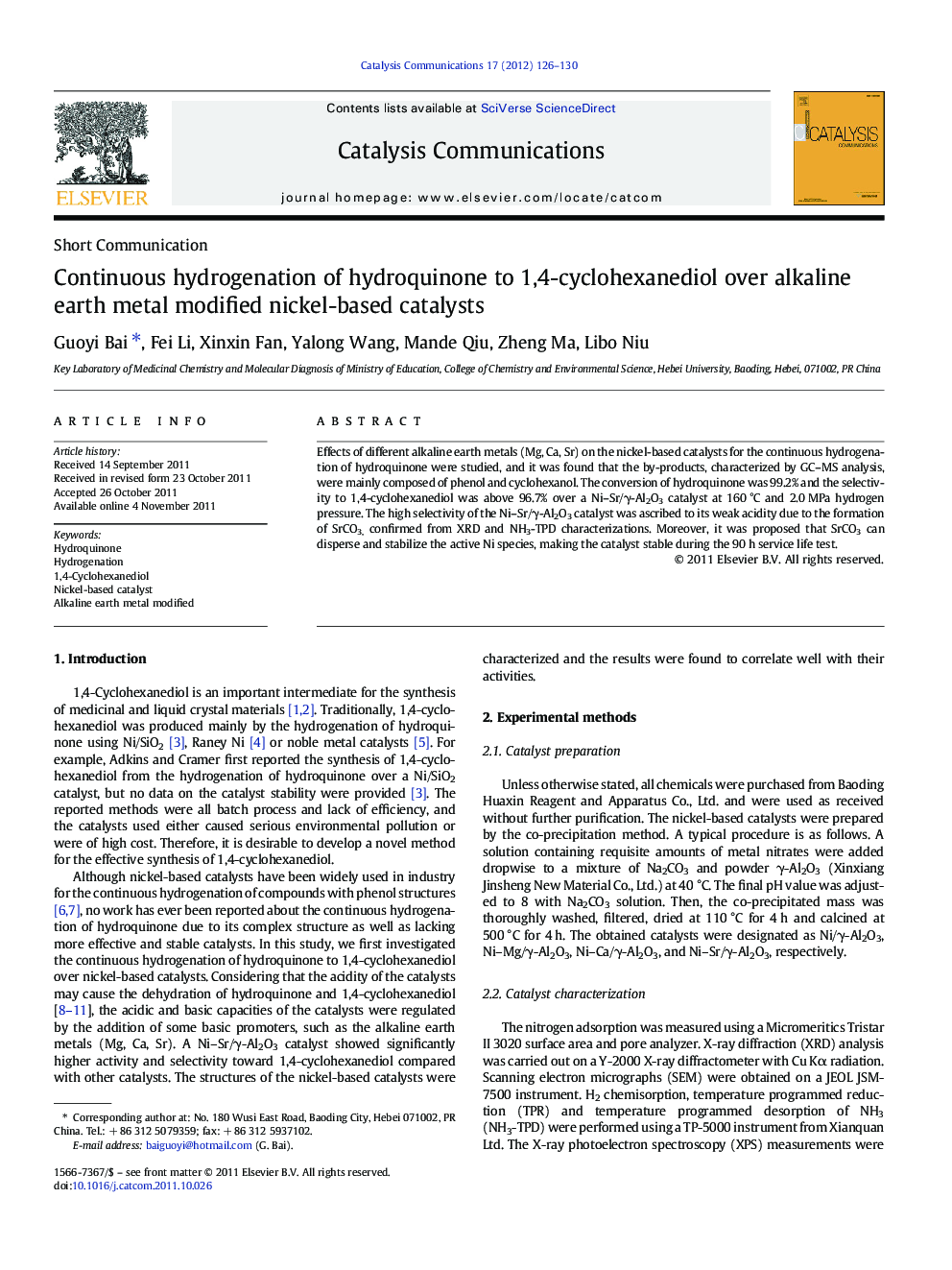| Article ID | Journal | Published Year | Pages | File Type |
|---|---|---|---|---|
| 50984 | Catalysis Communications | 2012 | 5 Pages |
Effects of different alkaline earth metals (Mg, Ca, Sr) on the nickel-based catalysts for the continuous hydrogenation of hydroquinone were studied, and it was found that the by-products, characterized by GC–MS analysis, were mainly composed of phenol and cyclohexanol. The conversion of hydroquinone was 99.2% and the selectivity to 1,4-cyclohexanediol was above 96.7% over a Ni–Sr/γ-Al2O3 catalyst at 160 °C and 2.0 MPa hydrogen pressure. The high selectivity of the Ni–Sr/γ-Al2O3 catalyst was ascribed to its weak acidity due to the formation of SrCO3, confirmed from XRD and NH3-TPD characterizations. Moreover, it was proposed that SrCO3 can disperse and stabilize the active Ni species, making the catalyst stable during the 90 h service life test.
Graphical abstractProposed routes for hydroquinone hydrogenation.Figure optionsDownload full-size imageDownload as PowerPoint slideHighlights► Nickel-based catalysts were first used in continuous hydroquinone hydrogenation. ► Acidity of the nickel-based catalysts was correlated with their selectivities. ► Ni–Sr/γ-Al2O3 is proved to have weak acidity and more active Ni0 on its surface. ► Ni–Sr/γ-Al2O3 exhibited the best activity, selectivity, and stability. ► A detailed reaction mechanism has been proposed based on the GC–MS result.
